8 days cruise sailing ship Mary Anne – Eastern Route
Route 8 days: Eastern Galapagos Islands
- 8 days
- 2-16
Highlights of the tour
- Red beach on Rabida
- Hybrid iguanas
- Great snorkeling opportunities
- Mangrove forests
Overview
Let the sailing ship Mary Anne take you to the Galapagos Islands. On this 8-day exciting cruise, you will learn about the flora and fauna of the western islands and learn interesting facts about their conservation and history.
You’ll take exciting hikes through diverse nature, enjoy spectacular views and have your naturalist guide explain the islands to you.
Penguins, iguanas and sea lions are just some of the species you are likely to see.
In addition to the exciting excursions, there is still plenty of time for snorkeling, swimming or just relaxing.
On the ship you can make yourself comfortable in your cabin, on the sun deck or at the bar and have delicious meals.
Itinerary
 Morning – Arrival at Baltra Airport: At the mainland airport, you have purchased your TCC or Ingala card and a luggage inspection has already been conducted to ensure that no foreign plant or animal species are introduced. Upon your arrival at Seymour Ecological airport, your TCC (Transit Control Card) will be stamped. This must be kept in a safe place during your trip, as it must be presented again on your return flight. In addition, the Galapagos National Park entrance fee is due upon entry (US$100), if not already paid. Your guide will meet you at the airport, help you with your luggage and will accompany you on the short bus ride to the port. Here you will board the yacht. After greeting the crew and captain, you will be assigned your cabins and then have your first lunch together.
Morning – Arrival at Baltra Airport: At the mainland airport, you have purchased your TCC or Ingala card and a luggage inspection has already been conducted to ensure that no foreign plant or animal species are introduced. Upon your arrival at Seymour Ecological airport, your TCC (Transit Control Card) will be stamped. This must be kept in a safe place during your trip, as it must be presented again on your return flight. In addition, the Galapagos National Park entrance fee is due upon entry (US$100), if not already paid. Your guide will meet you at the airport, help you with your luggage and will accompany you on the short bus ride to the port. Here you will board the yacht. After greeting the crew and captain, you will be assigned your cabins and then have your first lunch together.
Afternoon – Black Turtle Cove (Santa Cruz): This small cove is located on the north side of Santa Cruz Island and offers a unique setting for adventure. The landscape gives you the feeling of being in the Amazon rainforest instead of the ocean. Explore the tranquil emerald lagoon and surrounding flat coves by dinghy. The crystal-clear water gives you a view of groups of whitetip reef sharks, hammerheads and eagle rays.
Meals: Lunch/Dinner
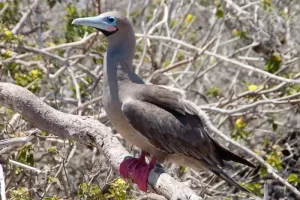 Morning – Darwin Bay: Within the submerged caldera of Genovesa lies Darwin Bay. This bay with its beautiful sandy beach holds some surprises as you walk over barren lava formations, past tide pools and shrubs, and then climb cliffs at the end. Every single species you observe along the way has its own ecological niche. Whimbrels and migratory sandpipers actively forage in the surf alongside resting Galapagos sea lions. Impressive frigatebirds and red-footed boobies nest in the mangroves, where songbirds such as yellow warblers, Darwin’s finches and Galapagos mockingbirds can also be seen. Something special are the two subpopulations of cactus finches, distinguished only by their song. There is wonderful snorkeling from the sandy beach.
Morning – Darwin Bay: Within the submerged caldera of Genovesa lies Darwin Bay. This bay with its beautiful sandy beach holds some surprises as you walk over barren lava formations, past tide pools and shrubs, and then climb cliffs at the end. Every single species you observe along the way has its own ecological niche. Whimbrels and migratory sandpipers actively forage in the surf alongside resting Galapagos sea lions. Impressive frigatebirds and red-footed boobies nest in the mangroves, where songbirds such as yellow warblers, Darwin’s finches and Galapagos mockingbirds can also be seen. Something special are the two subpopulations of cactus finches, distinguished only by their song. There is wonderful snorkeling from the sandy beach.
Afternoon – Prince Philip’s Steps (also called El Barranco): In the afternoon you will continue sailing to Prince Philip’s Steps, one of the two visitor points on Genovesa Island. Sometimes Galapagos fur seals rest on the rocky ledges. After climbing the steep stone steps, you will take a guided walk where you will see many different birds such as red-footed and blue-footed boobies. The red-footed boobies are almost only seen on Genovesa and nest in the palo santo trees. The bushes on the edge to the ocean side are loosening up and you can enjoy the incredible view and the ocean breeze. Continuing, you will pass by a colony of Nazca boobies and eventually reach nests of storm petrels, where, if you are lucky, you can also see the short-eared owl hunting.
Meals: Breakfast/Lunch/Dinner
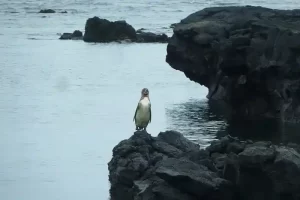 Morning – Bartolomé: Bartolomé Island rises 114 meters above the sea across from Sullivan Bay. Climb the steps of the Bartolomé Summit Trail and be rewarded with panoramic views of volcanic peaks, moon-like craters and lava fields.The island has two stunning beaches where sea turtles live as well as a very small colony of Galapagos penguins at the base of Pinnacle Rock.
Morning – Bartolomé: Bartolomé Island rises 114 meters above the sea across from Sullivan Bay. Climb the steps of the Bartolomé Summit Trail and be rewarded with panoramic views of volcanic peaks, moon-like craters and lava fields.The island has two stunning beaches where sea turtles live as well as a very small colony of Galapagos penguins at the base of Pinnacle Rock.
Afternoon – Chinese Hat: Chinese Hat is a 52-meter-high volcanic cone that forms another small island out of the rocky coast of Santiago, where a small colony of Galapagos penguins has settled. Because its primordial fire went out quite recently, this place is perfect for learning about volcanism, lava bombs and lava tunnels. On the beach you can also discover pillow lava with corals on top. This area was originally underwater before it was raised above sea level. Beaches of white coral sand grow and the holes in the eroding lava fields are filled in with lava sand. Galapagos sea lions and marine lizards contribute to the fertility of the soil. All together, they create more beneficial options for pioneer plants such as saltbush and the colorful sesuvium carpet.
Meals: Breakfast/Lunch/Dinner
 Morning – Rabida Island: After a “wet landing” on the remarkable red beach of Rabida, there are two short guided walks. Oxidized iron particles give the rocks and sand their rusty color. At the beach wall is a shallow, green-lined lagoon; this oasis is the most fertile spot on the otherwise arid island, covered with leafy palo santo trees. The salty pool attracts all kinds of waterfowl, such as pintails and sometimes American flamingos. Among the evergreen foliage of the surrounding mangrove bushes, many species of songbirds hide and breed. One of the most outstanding attractions is the large breeding colony of brown pelicans, the only ones in the world that dive.
Morning – Rabida Island: After a “wet landing” on the remarkable red beach of Rabida, there are two short guided walks. Oxidized iron particles give the rocks and sand their rusty color. At the beach wall is a shallow, green-lined lagoon; this oasis is the most fertile spot on the otherwise arid island, covered with leafy palo santo trees. The salty pool attracts all kinds of waterfowl, such as pintails and sometimes American flamingos. Among the evergreen foliage of the surrounding mangrove bushes, many species of songbirds hide and breed. One of the most outstanding attractions is the large breeding colony of brown pelicans, the only ones in the world that dive.
Afternoon – Dragon Hill: On Dragon Hill there are two main species that are most likely to be seen on any visit to the Galapagos Islands, although not too widely distributed throughout the islands: Galapagos land iguanas and American flamingos. You will climb a hill with giant Opuntia cacti where these “dragons” feed and breed. A short trail crosses the coastal vegetation zone as well as the slightly higher dry zone with endangered tropical dry forest. During the warm and humid season in the first half of the year, everything turns green. Evergreen giant opuntias with internal water reservoirs chose a different survival tactic in this dry climate than the leaf-dropping palo santo trees; in the end, both succeed. In addition, this is also a very photogenic site, with breathtaking panoramas over the bay and onto a fascinating, steep volcanic spout of red lava that overlooks the area. Dragon Hill has become famous for its salty lagoons behind the beach; these contain seaweed and shrimp and seasonally attract American flamingos. Dragon Hill is the best place on Santa Cruz to see them.
Meals: Breakfast/Lunch/Dinner
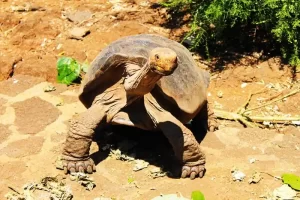 Morning – Highlands (Santa Cruz): In the highlands of Santa Cruz you can admire different species of birds, such as the small and large tree finches, ground finches, Galapagos flycatchers and cattle egrets (often standing on the backs of turtles). As you drive into the island’s protected area, you can see the contrasts of this diverse ecosystem. The path leads from the coast through the agricultural land and directly to the dense wet forests. Often you can see the Galápagos giant tortoises in the middle of the path or walking across the pastures and through the grass. This place is an ornithologist’s paradise because almost all birds either live on the island or pass through here.
Morning – Highlands (Santa Cruz): In the highlands of Santa Cruz you can admire different species of birds, such as the small and large tree finches, ground finches, Galapagos flycatchers and cattle egrets (often standing on the backs of turtles). As you drive into the island’s protected area, you can see the contrasts of this diverse ecosystem. The path leads from the coast through the agricultural land and directly to the dense wet forests. Often you can see the Galápagos giant tortoises in the middle of the path or walking across the pastures and through the grass. This place is an ornithologist’s paradise because almost all birds either live on the island or pass through here.
Afternoon – Charles Darwin Station: In the afternoon you will visit the Charles Darwin Research Station. Here biological research and indispensable conservation of the unique archipelago are carried out. The complex houses the Interpretation and Information Center of the National Park and the Galapagos Marine Reserve. The most unforgettable part of your visit will most likely be the successful hatchery and the encounter with the Galapagos giant tortoises.
Meals: Breakfast/Lunch/Dinner
 Morning – South Plaza: After breakfast, you will take an unforgettable guided walk on South Plaza, the best place to encounter the native Galapagos land iguanas. Also, note the unique mix between a male marine lizard and a female land iguana. Once on the top ledge, you’ll get an impressive view of booming waves crashing against the cliffs some 20 meters below. Clouds of petrels, storm petrels, shearwaters and noddi terns delight you with their spectacular flights.Take your binoculars and watch the red-billed tropicbirds with their graceful tails and their spectacular mating fights. These cliffs are also the nesting sites of the native fork-tailed gulls.Before lunch, you will sail to Santa Fe, possibly accompanied by bottlenose dolphins.
Morning – South Plaza: After breakfast, you will take an unforgettable guided walk on South Plaza, the best place to encounter the native Galapagos land iguanas. Also, note the unique mix between a male marine lizard and a female land iguana. Once on the top ledge, you’ll get an impressive view of booming waves crashing against the cliffs some 20 meters below. Clouds of petrels, storm petrels, shearwaters and noddi terns delight you with their spectacular flights.Take your binoculars and watch the red-billed tropicbirds with their graceful tails and their spectacular mating fights. These cliffs are also the nesting sites of the native fork-tailed gulls.Before lunch, you will sail to Santa Fe, possibly accompanied by bottlenose dolphins.
Afternoon – Santa Fe: After lunch, you will be met directly by a Galapagos sea lion colony on the beach, where you will have time for either a refreshing swim or exceptional snorkeling surrounded by tropical reef fishes in the crystal-clear waters of Barrington Bay. In addition, you will see vast opuntia cactus forests. The largest cacti on the island have extremely thick trunks and can grow over 10 meters tall. After a wet landing on Santa Fe beach, take a guided nature walk. This extraordinary island is a remnant of what is probably the oldest volcano in Galapagos. Your guide will decide whether to follow an easy, short walk or a strenuous, longer hike inland (moderately difficult, about 3 km).
Meals: Breakfast/Lunch/Dinner
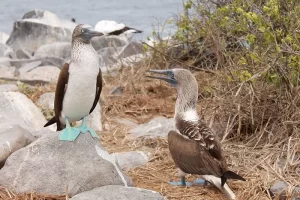 Morning – Suarez Point: This rocky area is home to the most impressive and diverse seabirds of the archipelago. The endangered Galapagos Albatross returns to Española Island annually (March – December). This allows visitors to marvel at the courtship dance characterized by whistles and bows (especially in October). Blue-footed and Nazca boobies, fork-tailed gulls and red-billed tropicbirds are also native to this island. Along the southern coast, high cliffs allow spectacular views of soaring birds and seawater shooting up through air holes like fountains.
Morning – Suarez Point: This rocky area is home to the most impressive and diverse seabirds of the archipelago. The endangered Galapagos Albatross returns to Española Island annually (March – December). This allows visitors to marvel at the courtship dance characterized by whistles and bows (especially in October). Blue-footed and Nazca boobies, fork-tailed gulls and red-billed tropicbirds are also native to this island. Along the southern coast, high cliffs allow spectacular views of soaring birds and seawater shooting up through air holes like fountains.
Afternoon – Gardner Bay: On the northeastern coast of Española Island, Gardner Bay offers a wonderful place to refresh in the turquoise sea and marvel at the large number of colorful reeffishes. Snorkel side by side with green sea turtles or enjoy the proximity of playful Galapagos sea lions. The white sand beach is additionally an important breeding ground for green sea turtles. You may also spot whales in the crystal-clear ocean. Afterwards, you will continue to Osborn Islet where you will have wonderful opportunities for snorkeling and swimming.
Meals: Breakfast/Lunch/Dinner
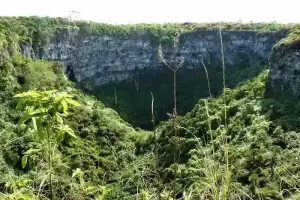 Morning – Twin Craters: The twin craters of Los Gemelos are located on either side of the road from Puerto Ayora to Baltra. Their name, however, is only metaphorical: The twin craters are not really craters, but have formed into fissures and chambers due to a collapse of the surface material. This view is simply breathtaking. Afterwards, you are taken to the airport of Baltra.
Morning – Twin Craters: The twin craters of Los Gemelos are located on either side of the road from Puerto Ayora to Baltra. Their name, however, is only metaphorical: The twin craters are not really craters, but have formed into fissures and chambers due to a collapse of the surface material. This view is simply breathtaking. Afterwards, you are taken to the airport of Baltra.
Meals: Breakfast
- Included services
- Accommodation on board in a cabin with private bathroom
- All meals, water, coffee and tea
- All excursions as indicated in the itinerary (subject to change) with bilingual naturalist guide (English-Spanish)
- Airport transfers in Galapagos (only guaranteed if the flight is booked together with the cruise)
- Snorkeling equipment (mask, fins and snorkel)
- Towels for bathroom and beach
- Not included services
- International flight and Galapagos flight
- Entrance fee to Galapagos National Park (USD 200 per person, children under the age of 12 USD 100)
- Transit control card (USD 20 per person, subject to change)
- Airport transfers in Galapagos (if the flight is not booked together with the cruise)
- Wetsuit
- Soft and alcoholic drinks
- Tips
- Travel insurance and other personal expenses
Hints
Ask us for children or group discount.
Price not valid for Christmas and New Years´s Eve departures.
All prices are subject to change if local tax increases or other circumstances beyond our control occur.
The itinerary is subject to change at any time due to circumstances beyond our control.
In order to rent a wetsuit, we will need your clothing size (S/M/L/XL) before your arrival in Galapagos. Standard wetsuits with a thickness of 3 mm are rented.
Travel Insurance:
To protect your travel investment, we highly recommend the purchase of travel insurance. Travel insurance is intended to cover medical expenses, trip interruption and cancellation, theft and other losses incurred while traveling domestically or internationally.
Visa and Entry Requirements:
Ecuador requires a valid passport (with a minimum 6 months validity). Contact your local embassy or consulate for the most up-to-date visa requirements.
Other interesting cruises

From US$ 5490 p.p.
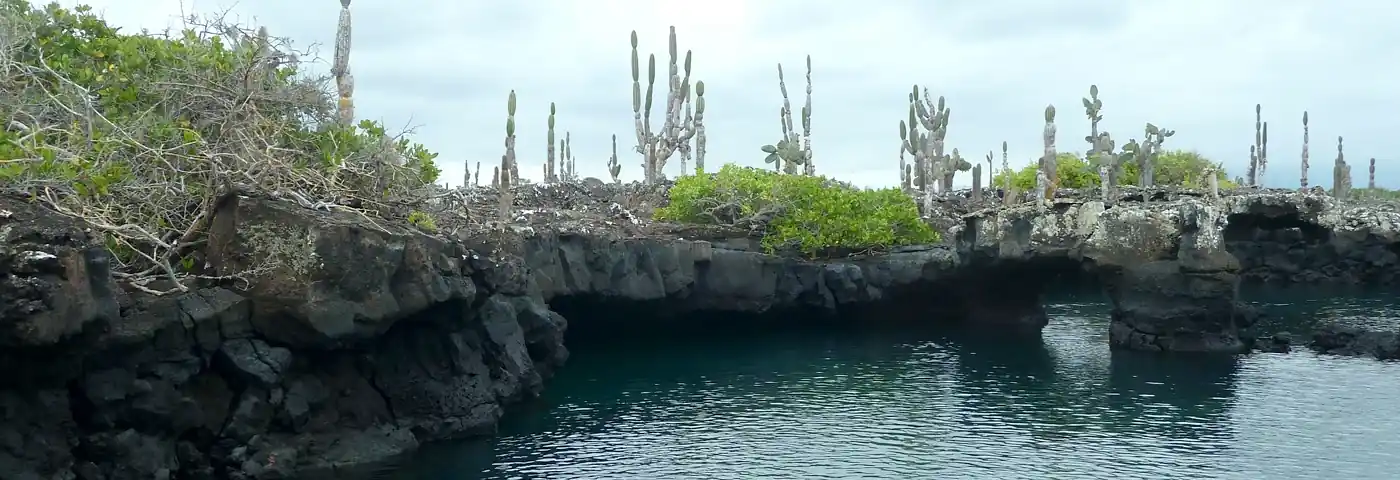
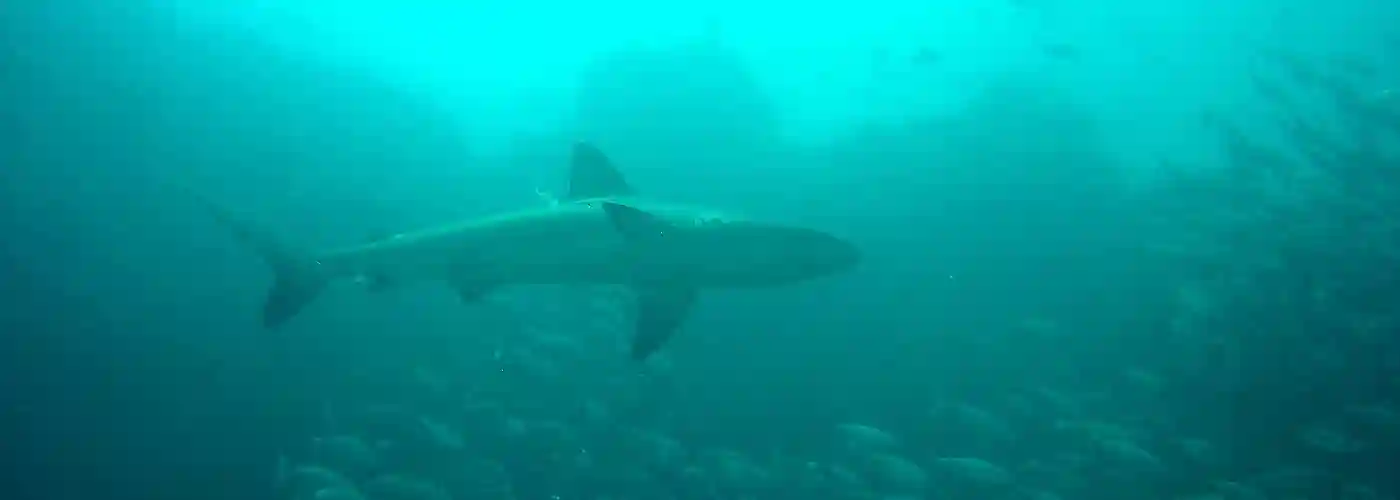
From US$ 3940 p.p.
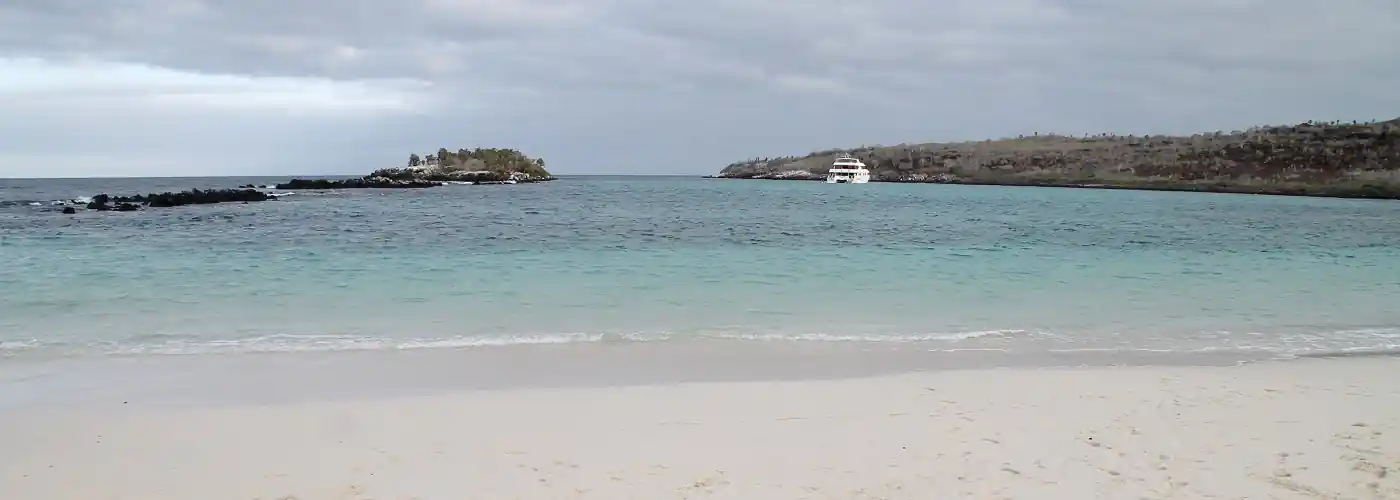
From US$ 3940 p.p.
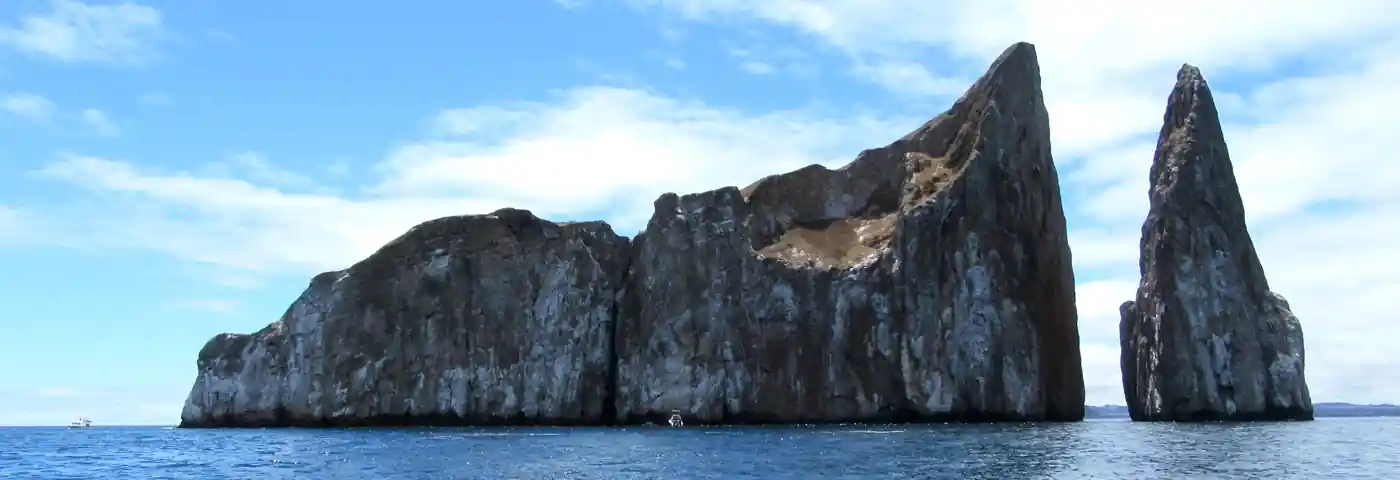
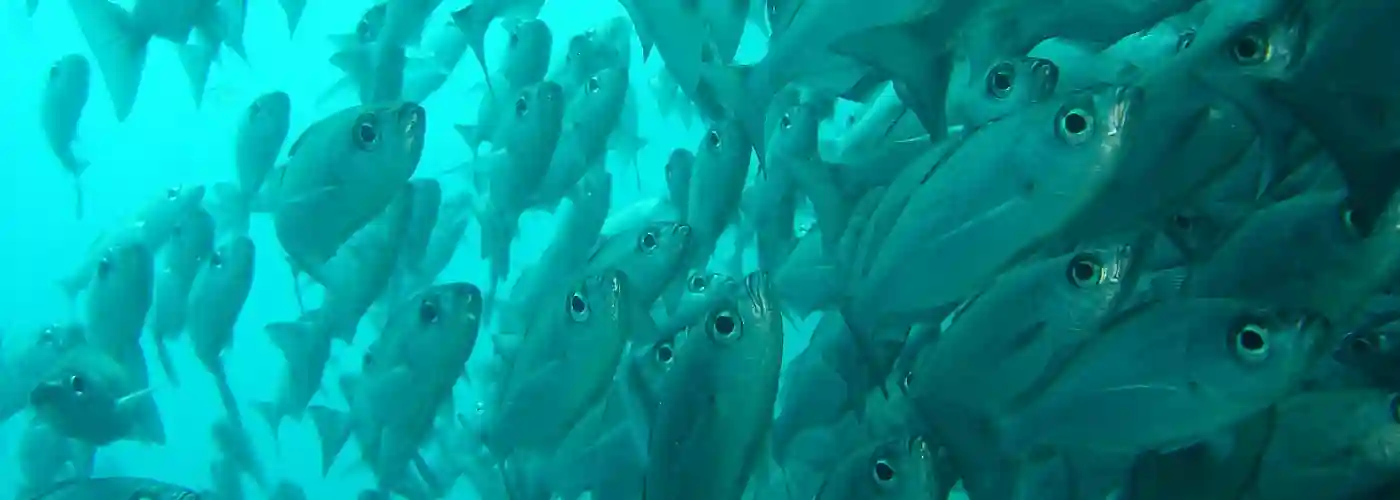
From US$ 2090 p.p.
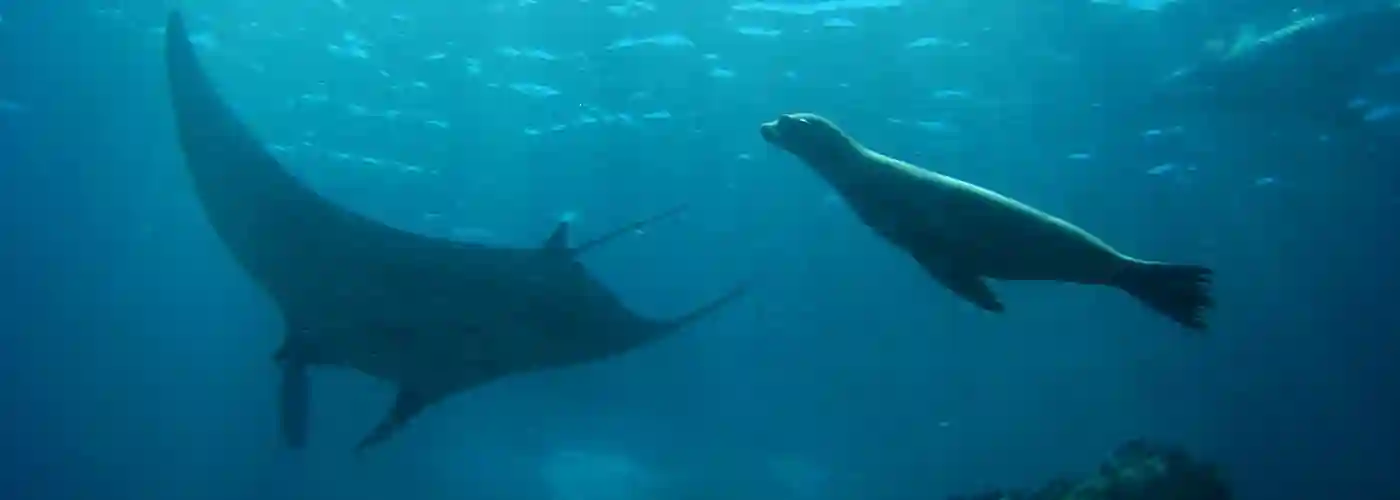
From US$ 5080 p.p.

From US$ 5740 p.p.
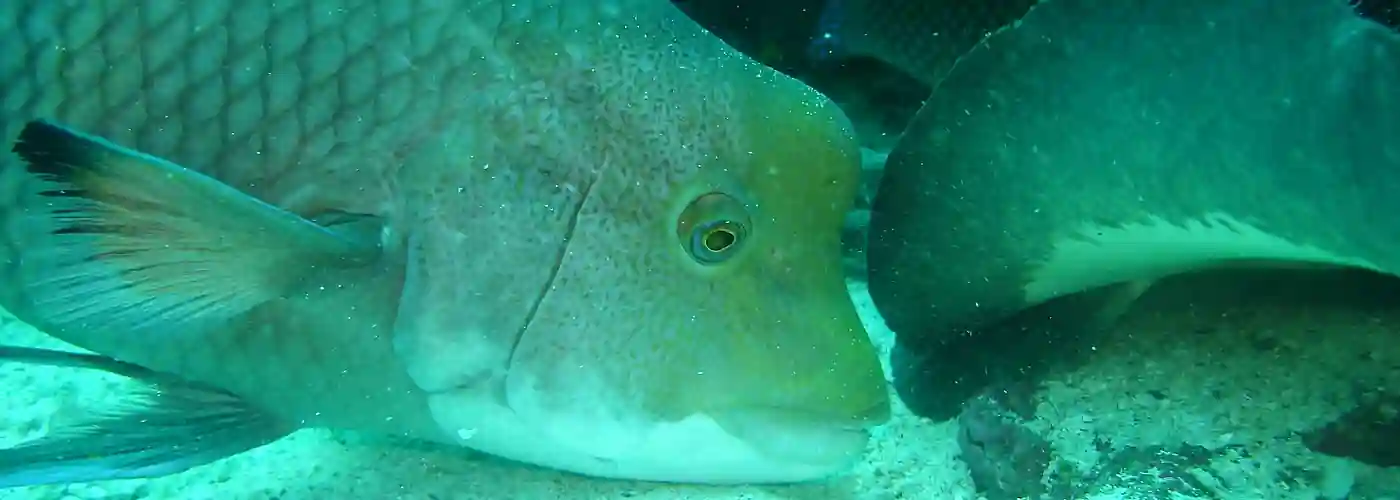
From US$ 5740 p.p.
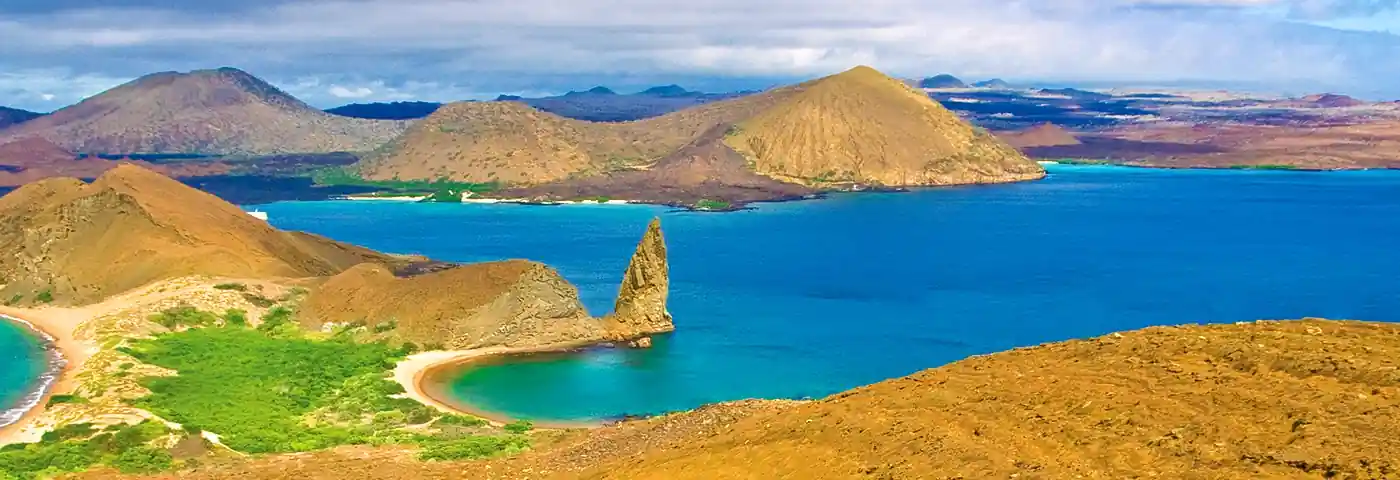
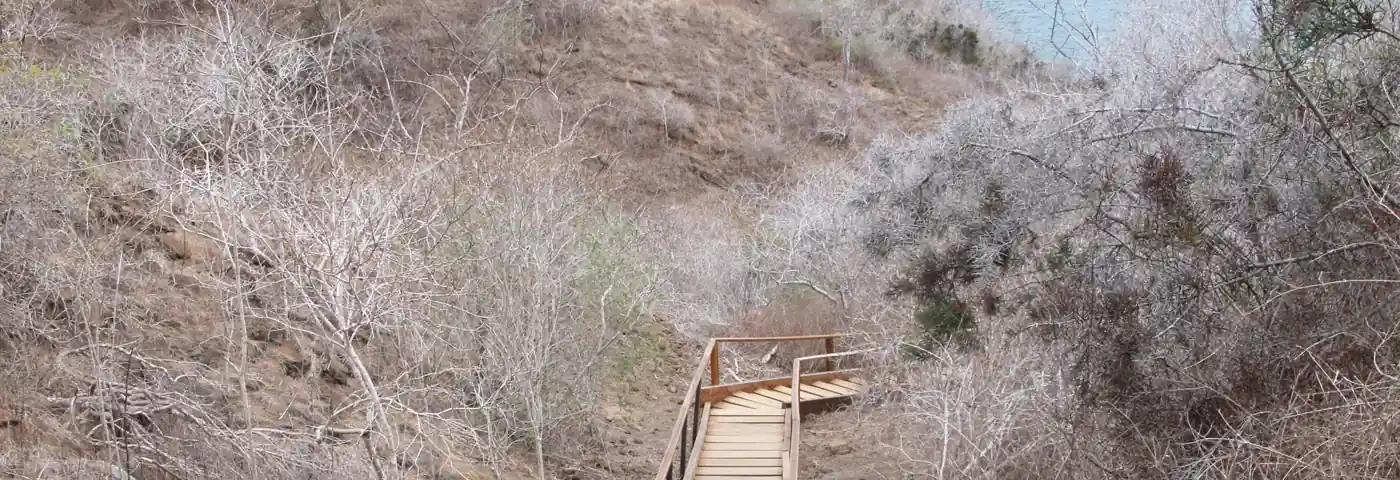

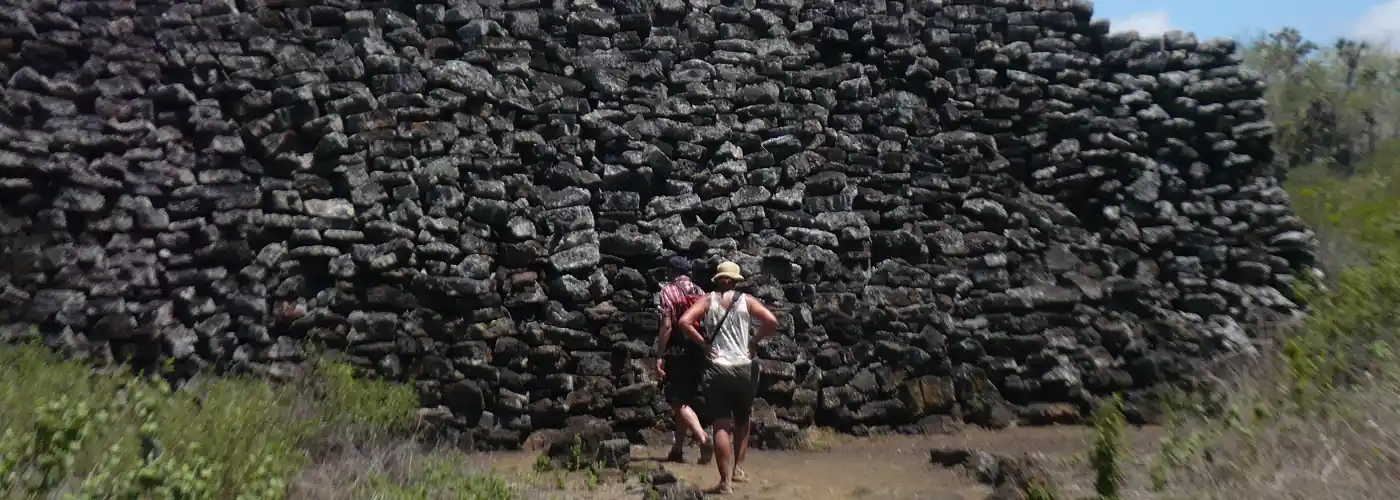

From US$ 2060 p.p.

From US$ 4490 p.p.
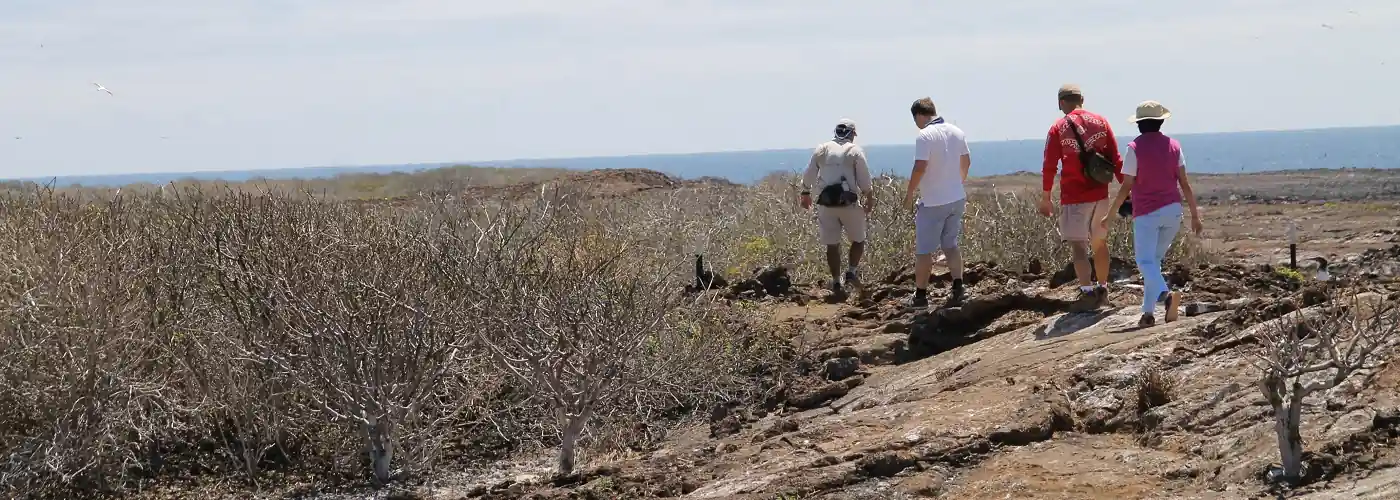
From US$ 3350 p.p.
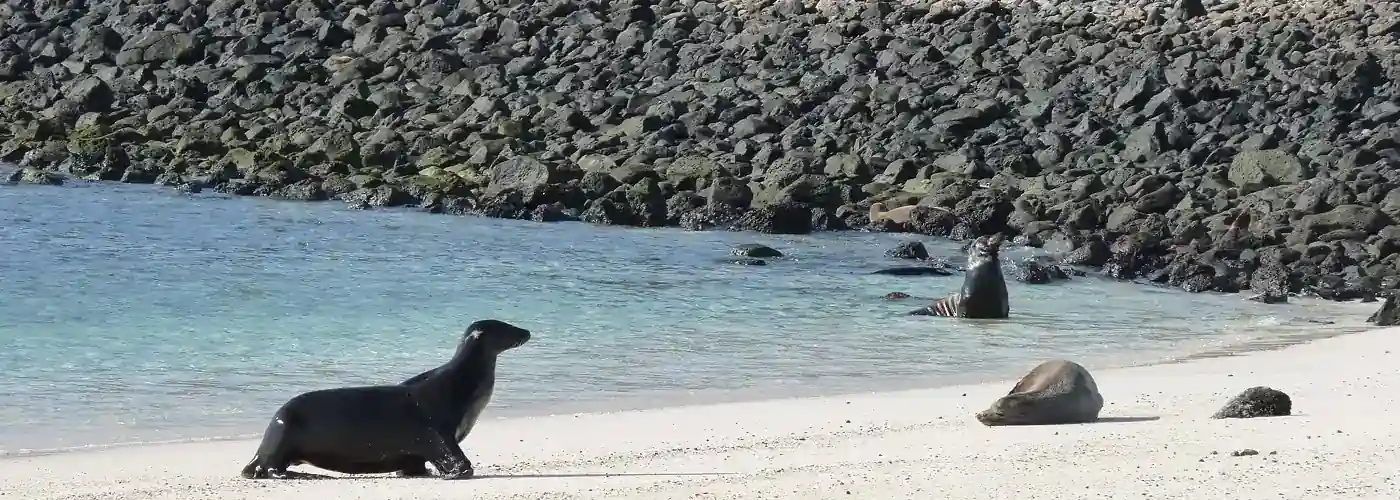
From US$ 3560 p.p.


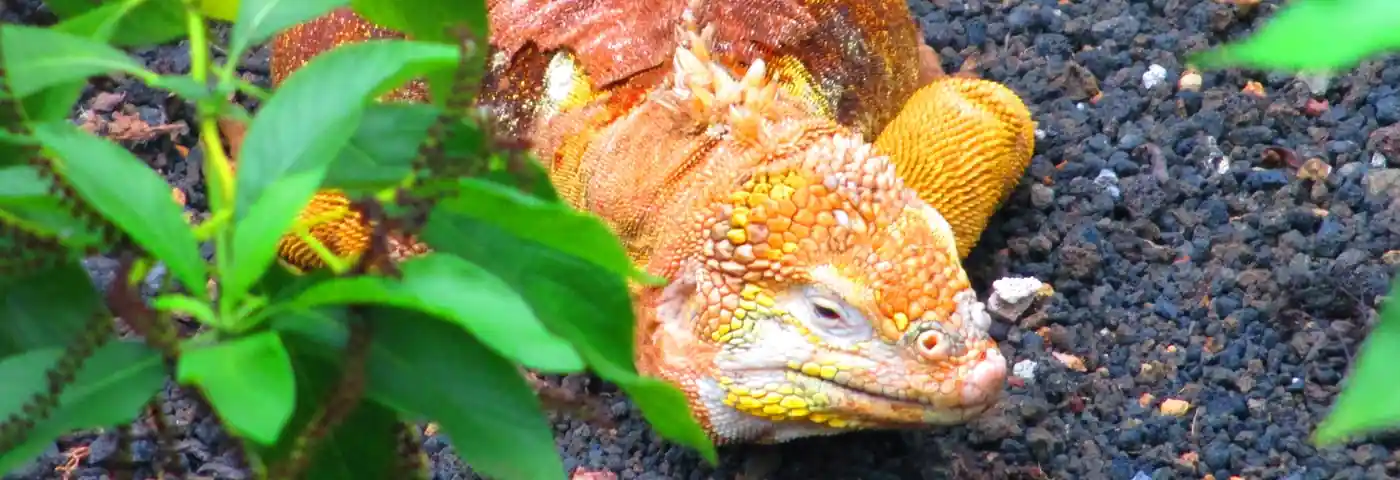
8 days cruise sailing ship Mary Anne – Eastern Route
Get in touch:

Dayana Arias Leon
- +593 (0)2 2194333
- hello@soleq.travel

